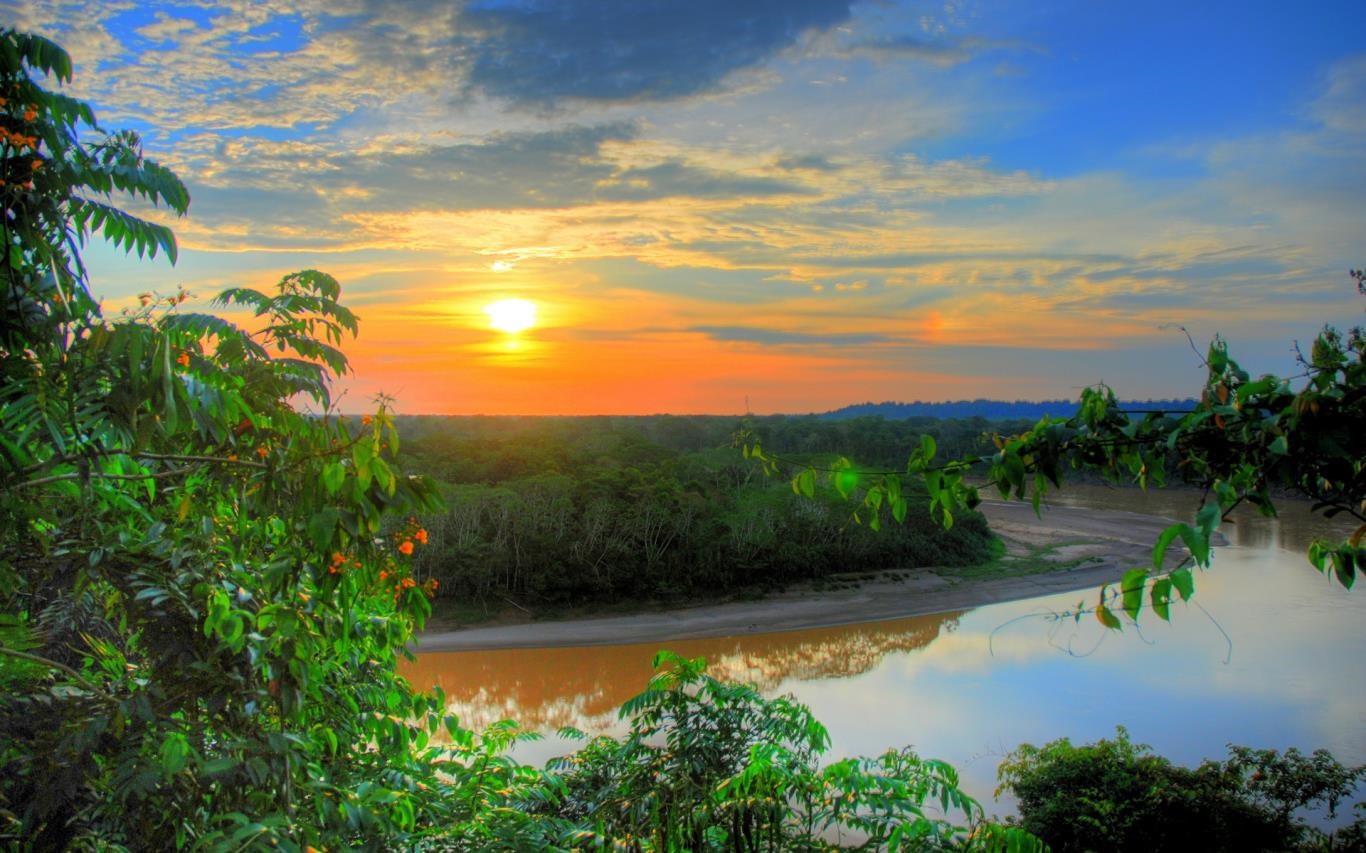Amazon Rainforest

Amazon Rainforest
The majestic Amazon Rainforest, often dubbed the 'Lungs of the Earth', is a vibrant, thriving ecosystem that is essential for global climate regulation.
Vast and Bountiful
Spanning across an expansive area of 6.7 million square kilometers, the Amazon Rainforest touches nine countries, with the major part being in Brazil. More than just a dense collection of trees, it is a network of diverse flora and fauna found nowhere else on the planet. From jaguars to tree frogs and orchids to towering kapok trees, it supports an extraordinary biodiversity.
A Treasure Chest of Medicinal Riches
Deep inside, the Amazon Rainforest is akin to a global pharmacy. An estimated 70% of plants with anti-cancer properties are exclusive to the rainforest. Indigenous communities have been utilizing this rich medicinal repository for centuries, folklore, healing rituals, and even food.
The Amazon River - Lifeline of the Forest
Flowing grandly across the forest is the formidable Amazon River which holds 20% of the world’s unfrozen freshwater. This extensive river system offers an important trade and travel route for local communities.
The Indigenous Custodians
There are about 400 billion individual trees comprising 16,000 species in the Amazon Rainforest, but the forest is not just about nature, it is also home to more than 400 different indigenous tribes, with their own distinct languages and culture, who have been the custodians of the forest for countless generations.
Threats Looming Over
Despite its enormous importance, the Amazon Rainforest faces severe threats from human activities. Illegal logging, mining, cattle ranching, and agricultural expansion are leading to relentless deforestation and loss of biodiversity.
The Role in Climate Regulation
The Amazon Rainforest acts as a massive carbon sink, absorbing large amounts of carbon dioxide that helps mitigate global warming. However, deforestation threatens this vital role, releasing the stored carbon back into the atmosphere, leading to a vicious cycle of climate change.
Conservation Efforts
Various conservation initiatives are underway to preserve this priceless green gem. Creation of National Parks, education about sustainable practices among local communities, and rigorous monitoring are few measures being taken to safeguard the forest.
Conclusion
The survival of the Amazon Rainforest is crucial to maintain the planet’s ecological balance. While threats persist, concerted global efforts can ensure this fascinating wilderness continues to thrive and play its vital environment role, for years to come. From every jungle cat that prowls its floor, to every insect that flutters between its trees, each is an irreplaceable link in the chain that is the life force of the Amazon Rainforest – a living, breathing testament to nature's potency and resilience.


 The best app store 1
The best app store 1